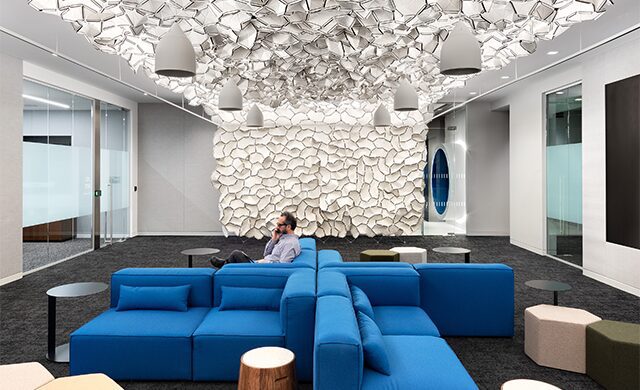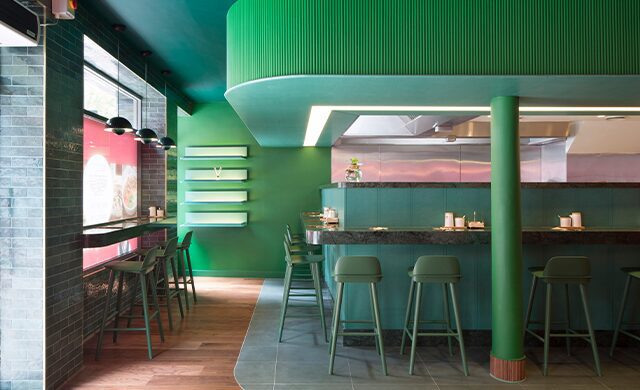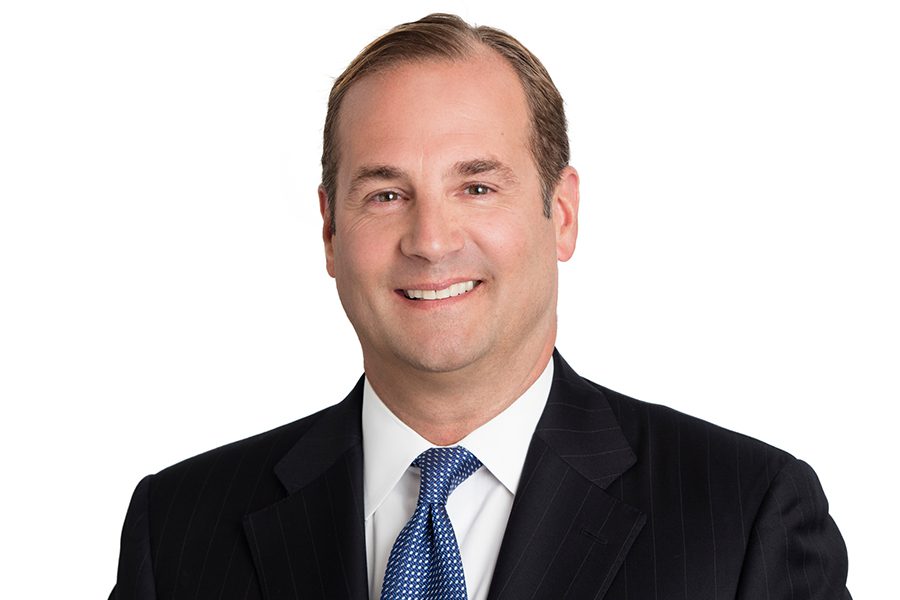George Floyd’s murder earlier this year has irrevocably changed the way we see the world. The video capturing the perpetuation of senseless police brutality, viewed against the despairing backdrop of COVID-19—a virus that has ravaged communities of color in particular—forced many white people to confront their own complicity and biases and listen to communities of color who have been on the front lines of combating systemic racism for centuries. Even in the midst of a raging pandemic, crowds worldwide took to the streets, as Black Lives Matter protests continue to underscore the necessity for long overdue reform.
Companies large and small are vowing to do better in the aftermath, but racism remains deeply entrenched in American culture, politics, and economics. Dismantling the status quo will take significant time and effort and require progressive and detailed plans of action. The predominately white hospitality and design industries have voiced commitment to making permanent, positive changes, aware that the only way toward an equitable future is through listening, education, and overhauling outdated hiring and promotion practices. Here, we delve into some of the pledges to inclusivity already in place, as well as paths to bring us closer to much-needed parity.
Prioritize Diversity
Of the nearly 59,000 hotels across the U.S., less than 1 percent are Black owned. It’s a staggering fact made only worse when considering that Black travelers spend about $60 billion annually.
The National Association of Black Hotel Owners, Operators, and Developers (NABHOOD) was established in 2001 with a threefold mission: increasing the number of Black people who own, operate, manage, and develop hotels; promoting more Black leaders to the executive level; and championing a more diverse supply chain.
Andy Ingraham, NABHOOD’s president and CEO, says that while racism has been a hot-button issue in the past, it hasn’t penetrated the leadership at major companies until now. “Unless diversity has a commitment from the CEO and the board of directors, then you’re never going to find more than lip service,” he says. If white leaders scan their offices and notice only employees who look like them, Ingraham points out that it is their responsibility to fix the imbalance to more accurately reflect society at large. That’s why he’s asking the hotel industry to commit to interviewing at least one Black candidate for every executive position that comes available. This, he says, “gives [Black] employees an opportunity to move up the corporate ladder.”

Eclipse at Half Moon, Salamander’s new Jamaican property designed by Hart Howerton
NABHOOD recently completed a diversity study with partners at Cornell University, the University of Rhode Island, Georgia State University, and Howard University, part of the organization’s proactive and pointed strategy to give the industry a roadmap for developing a more diverse workforce.
In Florida, for instance, there are more than 1,000 hotels in the Miami, Fort Lauderdale, and West Palm Beach market, Ingraham notes, yet there are only five Black GMs. “That’s deplorable,” he adds. “That’s something that should never happen in such a great industry.”
But hotel brands have made inroads in recent years. InterContinental Hotels & Resorts (IHG) established its Diversity & Inclusion Board in 2018, and its Black Employee Resource Group (BERG) advocates for the interests and development of Black colleagues. Hyatt has likewise ramped up initiatives, including its Global Inclusion & Diversity Council, co-chaired by Hyatt president and CEO Mark Hoplamazian and vice president of global diversity and inclusion Tyronne Stoudemire, as well as RiseHY, a commitment to hire 10,000 opportunity youth—those who are neither working nor in school—by the year 2025.

With interiors by Clodagh, Hyatt’s Miraval Berkshires Resort & Spa conveys a refined aesthetic
It’s Hyatt’s Emerging Leaders program, however, that promises the possibility of increasing the number of Black people in high-powered positions by “identifying department heads who are interested in becoming GMs,” says Stoudemire, “and giving them the training to prime them for this role.”
That’s exactly the kind of access that Ingraham says is paramount to altering the course of the industry: Hotels may not be alluring to a wide swath of Black workers because for so long “they didn’t see Black GMs or executives, they only saw Black housekeepers and doormen,” he points out. “When I hear the statement, ‘I started off as a dishwasher,’ the person who is making that claim tends to be an older white person who rose up to the corporate ranks.”
Shift the Spotlight
When Salamander Resort & Spa opened in Middleburg, Virginia in 2013, all eyes were on CEO Sheila Johnson, the entrepreneur who cofounded Black Entertainment Television (BET). Prem Devadas, president of Salamander Hotels & Resorts, says at the time, Middleburg—a small town in horse country—was “struggling to keep occupancy on Main Street. There was a failing water system, and it needed to be stabilized from a financial standpoint. Sheila felt strongly that the resort would be able to do that,” which it did without sacrificing Middleburg’s charm.
Johnson is a visionary, and she illuminates potential career paths by making herself accessible to young Black students and aspiring hospitality professionals so they can achieve similar levels of success. “When Sheila speaks to these groups, she challenges them to dream big and become an owner like her,” adds Devadas.

Local influences and ocean vistas instill a sense of place at the Eclipse at Half Moon
To encourage people of color to pursue work in hospitality, and the design industry specifically, students need to see “people who look like them in positions of creativity and prosperity,” says Angie Lee, partner and design director of interiors at New York- and Washington, DC-based FXCollaborative and president-elect of the International Interior Design Association (IIDA). “Representing a successful vision of a design career ideally happens in school, and the earlier the better,” she says.
Many organizations, including the National Organization of Minority Architects (NOMA) and IIDA, are leading the effort to host programs that encourage young people of color to pursue careers in design and architecture. “The first place we come in contact with design is our home,” says Cheryl Durst, executive vice president and CEO of IIDA. “Doing simple design exercises with children about how you can have power over your surroundings is incredibly validating. By encouraging curiosity and creativity at a young age, we can inspire the next generation of makers, designers, artists, and engineers.” Committed to the advancement of racial and ethnic diversity in the design industry, IIDA currently distributes multiple scholarships funded by firms and manufacturers that are available to educators and students. Expanding on the association’s reach, IIDA also plans to launch a pipeline program aimed at educating elementary students about the world of design.

FXCollaborative’s office space for a technology and accelerator incubator in North Carolina
Lee warns, however, that the Eurocentric design curriculum that awaits children, one “that tends to dismiss ethnic design influences as distraction, decorative, or primitive” and celebrates an abundance of white male heroes, is another roadblock that needs to be confronted. “When we allow people of color to breathe life, context, and experience into stale anecdotes and best practices, we can view monumental design problems through a better-fitting lens.”
Do the Work
Perkins and Will has been at the forefront of inclusivity for the better part of a decade thanks to principal and director of global diversity Gabrielle Bullock. Each office establishes a plan that aligns with the firm-wide strategy, which is tracked and measured through the firm’s Progress Tracker and Annual Diversity and Inclusion Report. “We’ve been very good at looking at gender in an inclusive culture, but race has always been the one piece that was difficult for folks to talk about,” Bullock explains.
Approximately 2 percent of the nation’s architects are Black; at Perkins and Will 4 percent of its U.S. staff is Black. Bullock knows that both the firm and the country can do better and that now is the time to “double down on the issue of racism and the disparities that creates. We continue to evaluate our practice, processes, and policies with an eye toward advancing Black talent into leadership roles and to clearly recruit more.” For a long time, she points out, people have thought that racism is a Black problem, but, “we’re the recipient of its impact. It’s everybody’s problem, it’s a humanity problem. The heavy lifting must be on firms and organizations—all the way down the line.”

Verdant gardens and courtyards define the King Saud bin Abdulaziz University for Health Sciences in Jeddah by Perkins and Will
Other design firms are also implementing changes. Gensler is partnering with historically Black colleges and universities (HBCUs) in the 50 different cities where the firm has offices; AvroKO is setting up diversity task forces in its New York, San Francisco, London, and Bangkok studios; and last year, FXCollaborative started processing internship applications blindly. “We scrubbed names, schools, and leveled the playing field by limiting the ways our unconscious biases could get in the way of identifying the most compelling talent,” Lee says. “We found a group of young people who were driven and diverse. Their schools were not from the pool of usual academic suspects, and it confirmed that the pipeline could be expanded easily, and that our biases require active retraining and unlearning.”
Na Li, cofounder and managing director of the London design and architecture studio Holloway Li, was born in China, but received her architectural training in England, which she considers a great advantage. Still, as a minority, she “works especially hard to be seen, supported, and heard in the industry,” she says. Immersing oneself in interior design can be an expensive endeavor—not just the academic programs it entails, but the traveling and experiences necessary to bolster a burgeoning career. “Few people from ethnic minority groups will ever have the opportunity to be able to do all of this, and their natural talent, which is the most important ingredient, is missed,” Li says. In addition to scholarship and pipeline programs, another way firms can help, Li suggests, is by sponsoring design-focused trips and internships for those students who need financial support.

Mr Meng Chongqing Gourmet in London by Holloway Li flaunts bold green tones
Rewrite the Narrative
After moving through the management ranks at a number of different hotel brands, Damon Lawrence was ready to create his own. In 2015, he founded Homage, the Oakland, California-based hospitality group catering to Black travelers. Paying tribute to the history and legacy of different communities and the Black-owned hotels of the 1950s and ’60s, Homage’s “messaging has never changed, but it looks and feels different now because the world has changed,” says Lawrence.
Homage’s first hotel, the four-room Moor, opened in New Orleans in 2018. Lawrence closed and sold the property after COVID hit, but he is now even more keen to identify new 100-key buildings and strike deals in different cities to magnify the Homage brand in a time when an industry attuned to Black culture feels profound. In fact, he’s currently looking at two potential projects in New Orleans. “We need more spaces that are made, run, and designed with us in mind,” he says.

Black-inspired art juxtaposes exposed brick in a bedroom at the now-shuttered Moor from Homage
Before launching Washington, DC-based Determined by Design in 2012, Kia Weatherspoon was in the U.S. Air Force, where she learned the value of tolerance “and how to put people first,” she says. “It reminds you that we’re all different, but in the grand scheme of things, it’s the mission that matters. It teaches you how to work with people from all walks of life and have a greater understanding that everyone is different and that’s okay.”
Weatherspoon is a Design Equity advocate, and Determined by Design tackles the likes of large public housing redevelopment projects in Chicago and DC, elevating design outcomes in low-income communities with thoughtful, inspiring concepts. “We ensure that people, demographics, and communities who don’t have access to well-designed spaces will,” she says, “and we challenge and educate anyone who does not provide it—whether it’s the general contractor, a developer, or one of our architectural partners.”

Kia Weatherspoon of Determined by Design
Similarly, Kimberly Dowdell, current president at NOMA and principal in the Chicago office of HOK, where she’s also a co-chair of the firm-wide Diversity Advisory Council, first became inspired by the potential of architecture as a child when she took notice of the boarded-up, yet beautiful buildings in her native Detroit. Architecture became her way of improving the quality of urban life. When new developments spring up in gentrifying areas, Dowdell asks a critical question: “Are we actually including those neighborhoods in the discussion about what’s being built?”
Dowdell’s propensity to link real estate with wellbeing is exemplified in SEED, the concept she created in 2005 as a research intern in the Office of the Chief Architect at the U.S. General Services Administration in response to LEED’s failure to incorporate social impact into its guidelines. Highlighting the right of every person to live in a socially, economically, and environmentally healthy community, SEED’s goals are even more relevant in the era of COVID-19 because of the pandemic’s disproportionate effect on communities of color.

A rendering of the St. Regis Belgrade by HOK showcases a dramatic ceiling installation
The virus has exposed grave racial and socioeconomic injustices, inviting the industry to look beyond the workplace and help reimagine communities from the inside. “Redlining had a negative impact on communities of color,” explains Dowdell. “It indicated where mortgages should not be granted to people. That ended up creating a good amount of disinvestment in many American cities like my hometown. We have to find a way to put resources back into these communities, because that’s where we see so much of the poverty and unrest.”
Earlier this year, Dowdell attended a luncheon where Chicago mayor Lori Lightfoot announced her ambitious aim to eradicate poverty in the city within the span of a generation. At the time, Dowdell thought to herself, ‘Wow, that’s quite a statement,’ one that will require dissecting why poverty even exists. But, she says, “you need those kinds of bold statements to move the needle.”
Photography courtesy of Chris Cooper, Salamander Resort & Spa, Perkins and Will, HOK, Agnese Sanvito, James Baigrie, and Homage
This article originally appeared in HD’s August 2020 issue.


